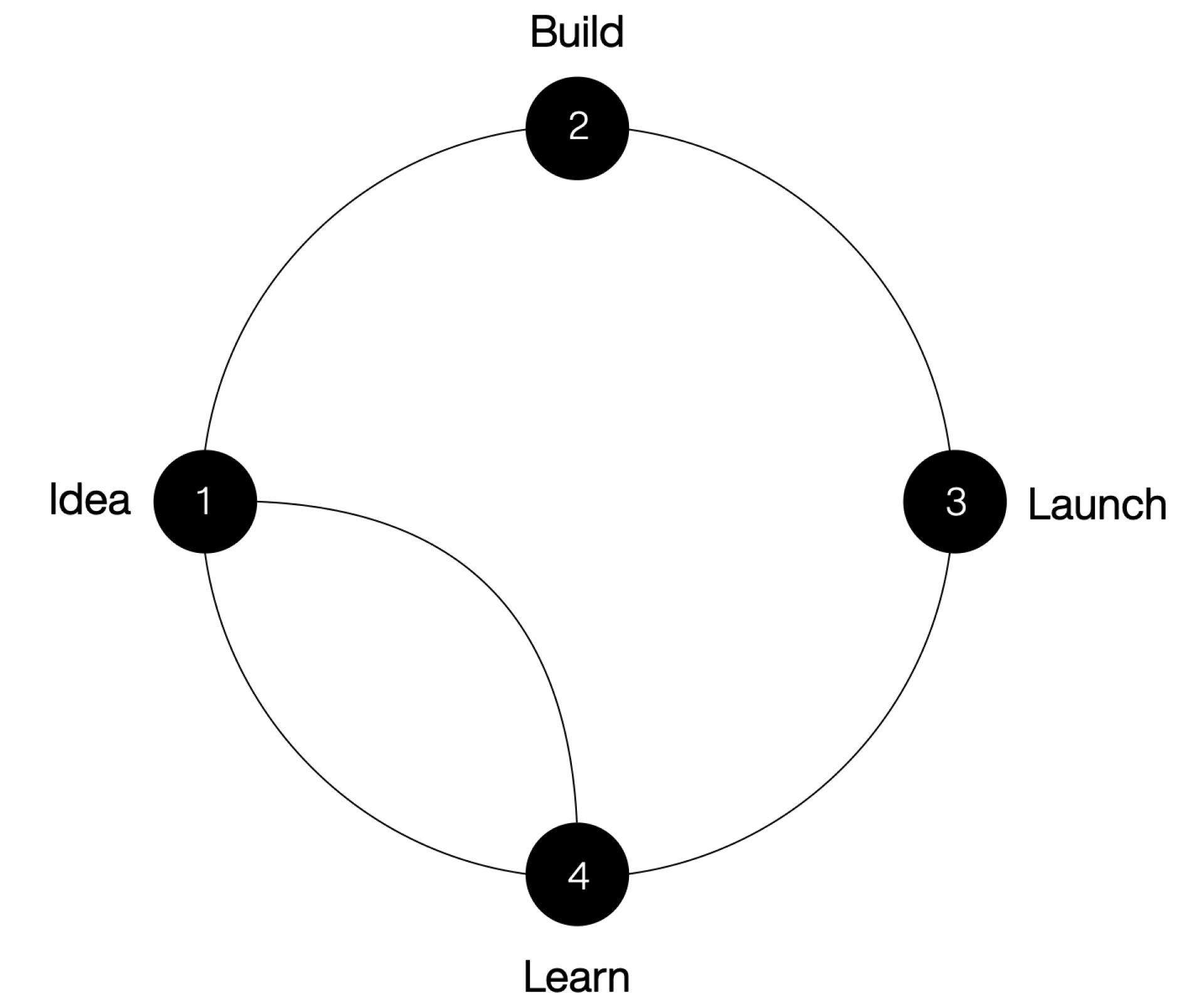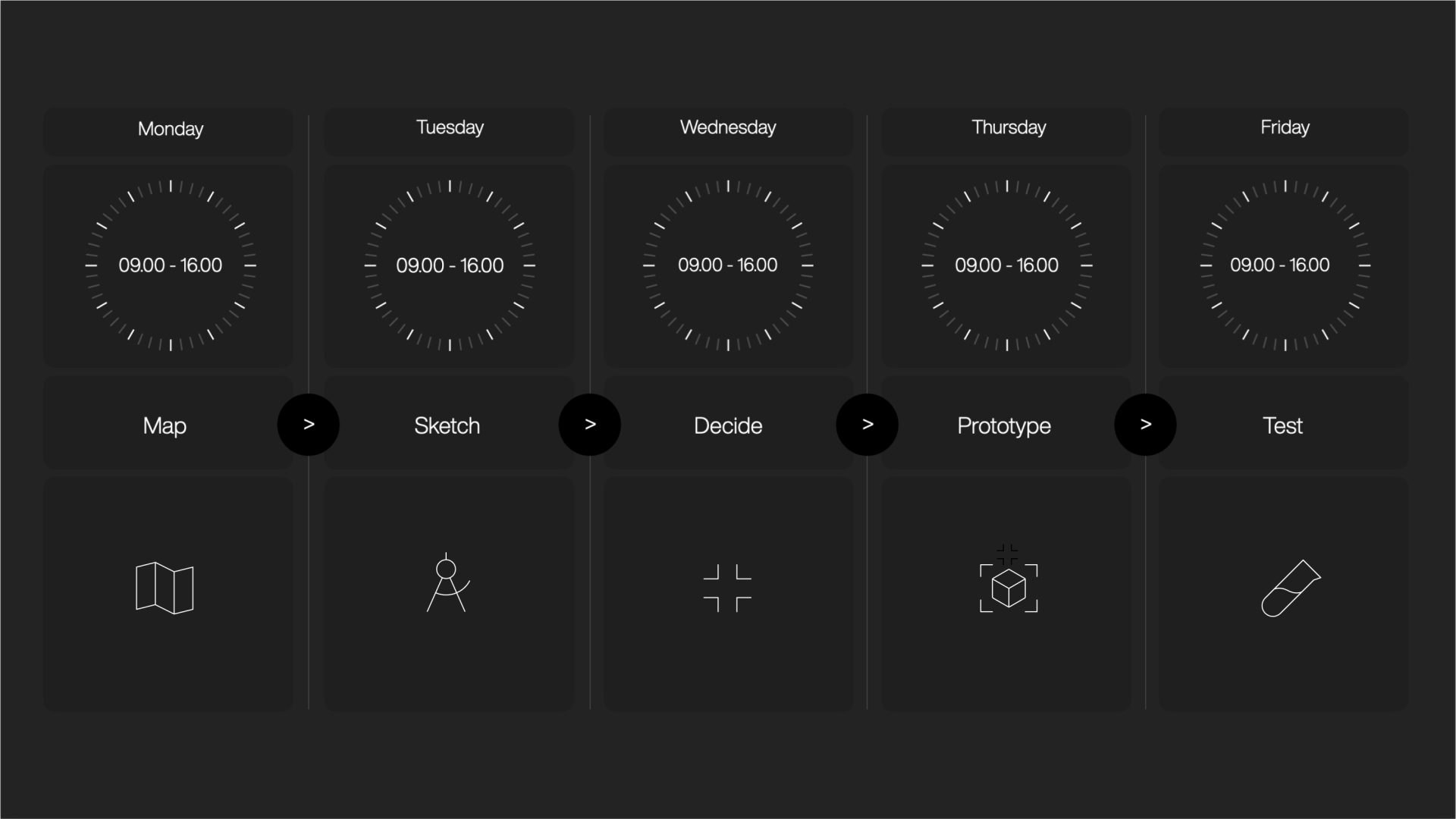A very very brief introduction to the Design Sprint

Design Sprints have become an indispensable method within application design. But how does this “Sprint” differ from the well-known agile sprint method in software development?
Design Sprints: A New Era for Business Strategy
Design Sprints, as we know them today, focus on gaining insight into crucial business questions within a single five-day period. This is done through the design, prototyping, and testing of ideas with users, employees and/or customers. In a world where companies are more cautious than ever before committing to projects, Design Sprints offer a combination of business strategy, customer development, innovation, and design thinking.

The history of the Design Sprint
Jake Knapp from Google Ventures introduced the world to the book “Design Sprints: how to solve big problems and test new ideas in just 5 days” in 2010. However, this methodology was the result of several years of collaboration and insight from different projects. During the last 10-years the design sprint has been updated to a 4 day 2.0 version developed by the Berlin based agency AJ & Smart.

Design Sprint Week: An In-depth Process
The Design Sprint process involves a small team (3-8 persons) that quickly moves from problem to tested solution. The week follows a predefined pattern, where each day has a specific goal. From defining long-term goals to creating prototypes and testing them with real users, the Design Sprint process ensures that teams can learn and iterate quickly. The most crucial point of the design sprint is the facilitator role, that ensures that the sprint is moving forward and delivers a solution to the problem that sprint is set to solve.

Below is the Sprint timeline as set out in Jake’s book.
Monday
Monday’s structured discussions create a path for the sprint week. You’ll start at the end and agree to a long-term goal. Next, you’ll make a map of the challenge. In the afternoon, you’ll ask the experts at your company to share what they know. Finally, you’ll pick a target: an ambitious but manageable piece of the problem that you can solve in one week.
Tuesday
On Tuesday, you get to focus on solutions. The day starts with a review of existing ideas to remix and improve. Then, in the afternoon, each person will sketch, following a four-step process that emphasizes critical thinking over artistry.
Wednesday
You and your team will have a number of solutions. You can’t prototype and test them all — you need one solid plan. In the morning, you’ll critique each solution, and decide which ones have the best chance of achieving your long-term goal.
Thursday
A realistic façade is all you need to test with customers, by focusing on the customer-facing surface of your product or service, you can finish your prototype in just one day.
Friday
Interview customers and learn by watching them react to your prototype.
Benefits and Challenges
While Design Sprints offer many benefits, such as reducing risk, quickly solving design problems, and obtaining direct user feedback, there are also challenges. The biggest challenge is often ensuring stakeholder engagement and willingness to let employees commitment time. But with the potential benefits clearly outweighing the disadvantages, the Design Sprint has become an indispensable tool for many companies.
Concluding Thoughts
Design Sprints are not just a method; they are a revolution in design and business strategy. With its ability to quickly transform ideas into testable prototypes, it has changed how companies approach innovation.